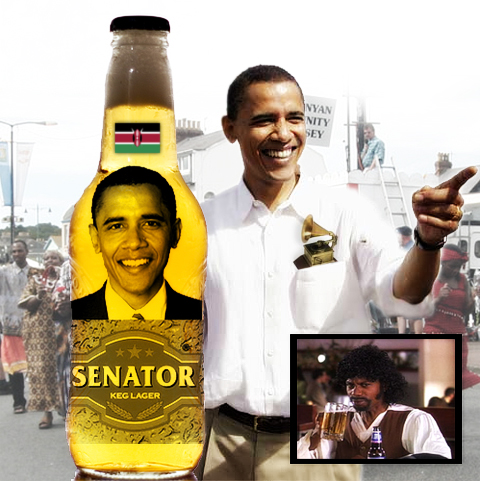
Beer Ping!
A low to medium ping list aimed at all of us who, well, love our beer…
FReepmail rzeznikj at stout or GOP_Raider to be added or struck from the list…
Posted on 09/11/2008 1:35:11 PM PDT by anonsquared
Genetics is often charged as providing a brave new world for science and now it seems that new research into the makeup of brewing yeasts in lager could revolutionise the very taste of beer, new research claims.
In a study appearing online in the journal Genome Research, scientists from Stanford University in California say they have been able to identify the origins of Saccharomyces pastorianus yeast, a ‘hybrid’ organism used in lager.
Such a breakthrough may help scientists and brewers to better understand how to manipulate the individual yeast strains that contribute to taste, colour and even aroma variation in lagers, the report states.
Methodology
The research looked at the two components of S. pastorianus, S. bayanus and S. cerevisiae, particularly in their ability to ‘out-compete’ other yeasts during the cold fermentation process of lager.
To better understand the organisms’ affects on lager composition, the researchers compared the various genomic properties of yeast strains used at different breweries around the globe.
As part of this testing, Dr. Barbara Dunn and Dr. Gavin Sherlock said they had attempted to measure the contribution of the two parent yeasts in strains of S. pastorianus. The study is said to have found new insights into how the use of yeast had evolved in lager production.
Dunn said that the findings indicated that two distinct groups of S. pastorianus exist, although major genetic variations were found even within these two divisions. She added that the discovery indicated a flexibility in the uses of yeast for the production of beer.
"The fact that lager yeasts isolated from different breweries each seem to have a unique genomic make-up may indicate that the yeasts are adapting to the conditions specific to each brewery," Dunn stated.
"Our discovery that unique genomic structures may be characteristic to each brewery and/or beer type could lead to insights on how to directly control flavour and aroma in beer."
Lager making
Despite its many traditions, lager making remains a relatively new development in drink manufacture, having only gained worldwide acceptance in the late 19th century, according to the researchers.
By comparison, ale-type beers have been brewed for thousands of years using the S. cerevisiae yeast also favoured by bakers.
The report states that the difference in yeasts used between the two beer varieties allows lager products to undergo fermentation at a much lower temperature.
Source: Genome Research Published online, doi:10.1101/gr.076075.108. " Reconstruction of the genome origins and evolution of the hybrid lager yeast" Authors: B. Dunn and G. Sherlock
This Genome’s for You!
Lager is gross. Weizen, all the way!
Say no to Frankenbeer
The title gave me the impression that scientists had decided that human beings needed to be genetically engineered to appreciate beer better.
Actually, what the scientists discover may help homebrewers in picking a natural yeast to get the finished product they desire.
PING to the homebrew list!
Lager beer has been around since the beginning of beer in North America, especially Canadian beers, which are the lager champions.
Ales by comparison simply suck. Nobody in their right mind would choose a warm ale over a cold lager on a hot summers day.
Ales are a European thing, enjoyed near a warm fire during their usual dreary damp days- average weather in the UK and Europe.
bmflr

Beer Ping!
A low to medium ping list aimed at all of us who, well, love our beer…
FReepmail rzeznikj at stout or GOP_Raider to be added or struck from the list…
One could take the same Luddite reaction to breeding the various strains of hops. I choose not to.
Beer was an accidental product once upon a time, all efforts to truly make it better have been for the good of beer drinkers.
Actually lagers have not been widely commercially available until the advent of refrigeration.
Lagers must be brewed and stored (lagered) at a constant temperature between 35 and say 50 degrees, which, if you don’t have ice caves, as in the Bavarian Alps, was not possible 350 years ago in the Americas.
Lagers were first invented in Europe, in Germany and what’s now the Czech Republic less than 200 years ago. About the same time that micro-biology was being developed brewers isolated the “Saccharomyces pastorianus” (I would bet named for Louis Pasteur....) yeast that keeps fermenting at the required lower temperatures. Ale yeast just goes to sleep at about 60 degrees.
Lager is by far the favorite beer of Europe—the UK and Belgium being notable exceptions. Belgian ales are understood as some of the most artfully made, finest beers in the world.
German and Czech lagers are also some of the finest lagers in the world. Can’t say I’ve heard of a single great, world class...Canadian beer.
Most Ales, other than special Cask conditioned ones in England, are drunk at the same temperature as lagers, that is cold. However, since cold kills your taste buds, the better tasting the beer, the easier it is to drink at a warmer temperature—say cellar temperature of 55F, like a good red wine.
And yes, I am a beer geek.
Skol!
Say NO to Obamabeer!

And mankind in general.
Ever heard of guiness? THat’s not a lager.
No, ale is not a european thing. It’s more of an english thing. And the surrounding areas to england...ireland, scotland, BeNeLux, and the northwestern portion of france. The rest of the world has largely changed over to lager. Lager was invented in the bohemian region of germany/czech, iirc.
BTW, do you know how american style beer was invented? It was invented during the prohibition era by the gangsters who were trying to make the cheapest crappiest beer they could think up that people would still drink. And during the prohibition, people would drink some pretty crappy beer. Well, somehow the flavor stuck. And now us americans are stuck with this crap.
Disclaimer: Opinions posted on Free Republic are those of the individual posters and do not necessarily represent the opinion of Free Republic or its management. All materials posted herein are protected by copyright law and the exemption for fair use of copyrighted works.